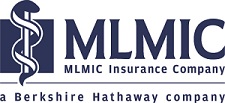ABOUT US
About Us Welcome to the New York State Osteopathic Medical Society (NYSOMS), the premier organization dedicated to advancing the osteopathic medical profession in the Empire State. Our mission is to foster collaboration, education, and advocacy to support the health and well-being of all New Yorkers. Who We Are NYSOMS is a dynamic and inclusive community of osteopathic physicians, medical students, and professionals committed to excellence in healthcare. With a rich history spanning decades, we've grown to become a vital force in shaping the future of medicine in New York. Our Vision Our vision is to be the driving force behind the growth and recognition of osteopathic medicine in New York. We aim to create an environment where osteopathic physicians can thrive, where patients receive top-quality, patient-centered care, and where students and residents are nurtured and inspired to reach their fullest potential. What We Do
Why Choose NYSOMS? By becoming a part of NYSOMS, you join a dedicated group of professionals who are passionate about their work and the betterment of healthcare in New York. Whether you're an osteopathic physician, a medical student, or a healthcare advocate, NYSOMS offers you the opportunity to be part of a community that drives positive change. We invite you to explore our website, get to know our leadership team, and learn about the benefits of membership. Together, we can continue to make a significant impact on the healthcare landscape of New York State. Get Involved We encourage you to reach out and get involved with NYSOMS. Whether you're interested in membership, events, or partnerships, there are many ways you can contribute to the advancement of osteopathic medicine in New York. Thank you for visiting NYSOMS, and we look forward to the opportunity to work together in the pursuit of better healthcare for all. NYSOMS (the New York State Osteopathic Medical Society) is the non-profit professional association representing Osteopathic Physicians (D.O.’s) across the state of New York. To learn more about our history follow this link. To learn more about D.O.’s and Osteopathic Medicine keep reading.
|

